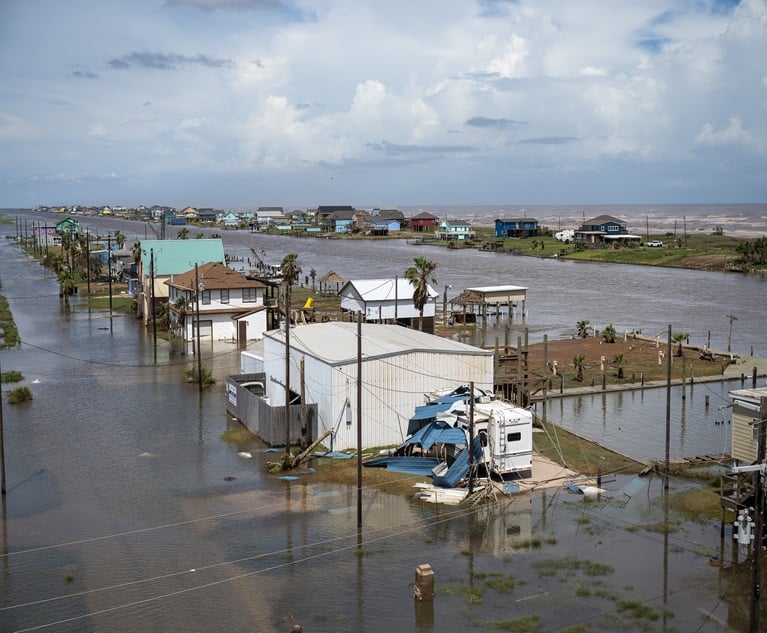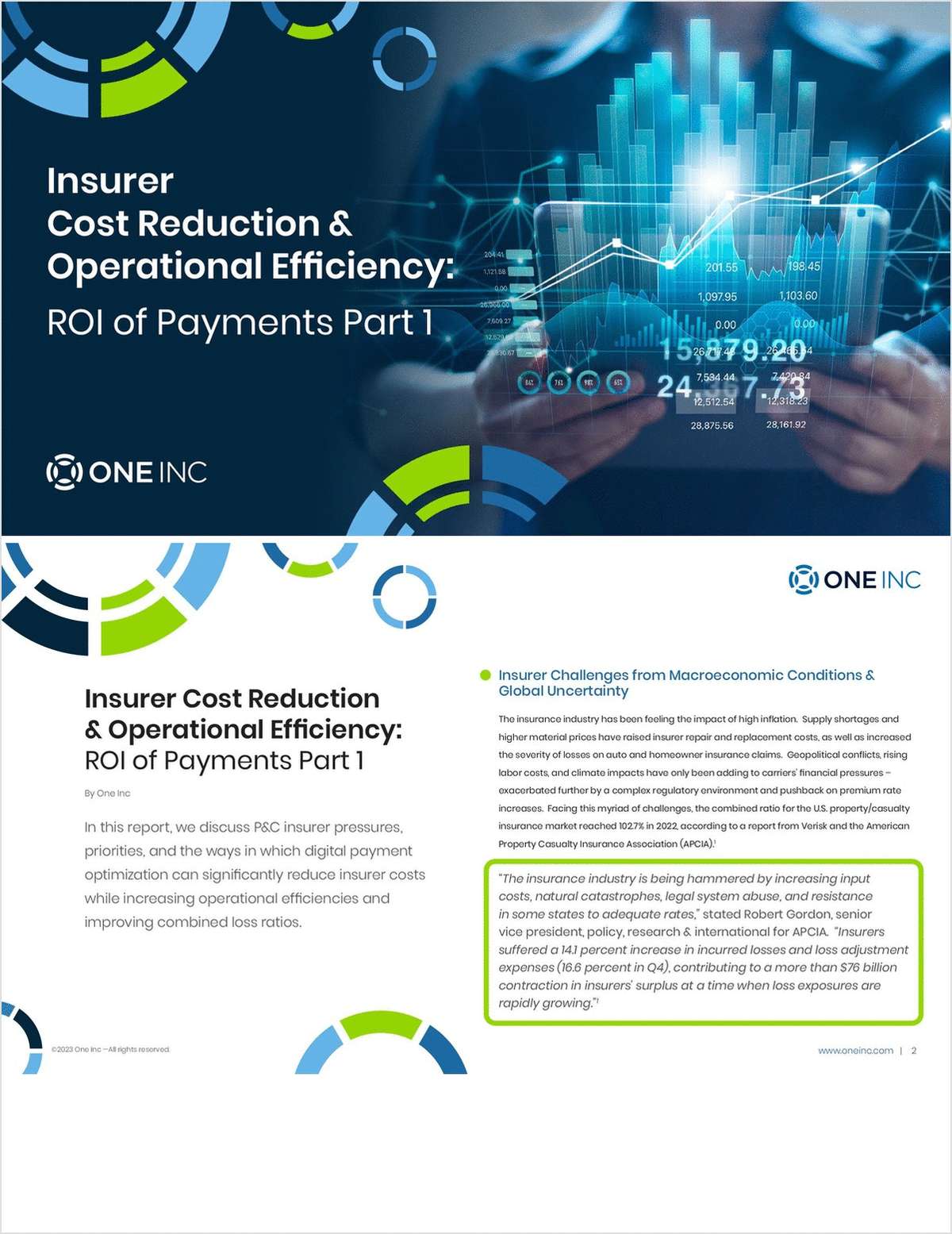 The biggest news in the reinsurance marketplace over the past 12 months has been the influx of an estimated $50 billion in new capital, including more than $35 billion from nontraditional sources such as hedge funds and pension funds. As a result, traditional reinsurers have begun to take “robust defensive measures,” says Willis Re.
The biggest news in the reinsurance marketplace over the past 12 months has been the influx of an estimated $50 billion in new capital, including more than $35 billion from nontraditional sources such as hedge funds and pension funds. As a result, traditional reinsurers have begun to take “robust defensive measures,” says Willis Re.
Despite the $30 billion impact of Superstorm Sandy, Willis Re says in its current “1st View” market report that reinsurers are offering price reductions in nearly all global territories. Property rates for catastrophe loss-free are down 20 percent across the U.S., including a 25 percent drop in hurricane-prone Florida. Reinsurers are broadening coverage through multi-year agreements, extended-hours clauses and additional reinstatements.
Brokers and buyers are understandably cheering the impact of the capital infusion. “For brokers who spend their life thinking about how they can service their clients better, it's fantastic,” says Bryon Ehrhart, chairman of Aon Benfield Analytics and of Aon Benfield's Investment Banking group. “We've been challenged to find low-cost catastrophe capacity since Hurricane Andrew.”
Rate reductions may ultimately allow insurers to rethink their strategy for high-risk areas, including coastal zones and fault lines. “If I can manage business for underwriting, claims and distribution, I can now finance it,” Ehrhart says. “It doesn't mean insurers will write all the business on the coast, but they'll be less restrictive. It also allows government agencies who interceded in those markets to think differently, like FEMA who was well-bruised by multiple storms, and the NFIP, which has a $28 billion deficit after Sandy. They might be able to transfer risk at reasonable terms.”
 Unfortunately for growth-focused reinsurers, insurers are choosing larger retentions—which is driving down reinsurance demand. “I've seen no reversal of that trend,” says Tad Montross, chairman and CEO of General Re Corp. “I think the industry is overall pretty well-capitalized and feels comfortable with the larger retentions.”
Unfortunately for growth-focused reinsurers, insurers are choosing larger retentions—which is driving down reinsurance demand. “I've seen no reversal of that trend,” says Tad Montross, chairman and CEO of General Re Corp. “I think the industry is overall pretty well-capitalized and feels comfortable with the larger retentions.”
Advocacy groups have been exploring new opportunities for growth. “We've been pursuing a lot of initiatives on government programs, such as flood and terrorism risk, state residual markets and other areas where the government is providing insurance,” reports Frank Nutter, president of the Reinsurance Association of America (RAA). “There's an appetite with regulatory bodies for laying off risk to the reinsurance market.”
However, even though reinsurance is a global industry, organic growth will be difficult with the slow expansion of many economies, and the push into emerging markets is still a nascent effort.
 “People are working hard to expand in these [emerging] areas. However, while the percentages of growth are certainly high, the actual volumes of business generated are still comparatively low in comparison with more mature markets,” says James Vickers, chairman, international at Willis Re.
“People are working hard to expand in these [emerging] areas. However, while the percentages of growth are certainly high, the actual volumes of business generated are still comparatively low in comparison with more mature markets,” says James Vickers, chairman, international at Willis Re.
The New Reality
The reinsurance industry cycle has typically included an influx of capital after a natural catastrophe, as demand spikes and companies chase expected premium increases. However, the current cycle, which began after the catastrophic losses of 2010, differs from others in that it has seen a flood of capital from non-traditional sources, including hedge funds and pension funds providing catastrophe bonds and other insurance-linked securities (ILS). Those sources have been drawn to the market by the opportunity for greater returns on investment than the market has been delivering.
 Today, alternative capital accounts for an estimated 20 percent of the market, and analysts expect that amount could easily reach one-third in the months ahead. As with any cycle, this one will have an end—but it is not projected any time soon. Willis Re points out that it would only take a .5% allocation of global pension funds' assets under management into ILS products to deliver $150 billion of ILS capacity.
Today, alternative capital accounts for an estimated 20 percent of the market, and analysts expect that amount could easily reach one-third in the months ahead. As with any cycle, this one will have an end—but it is not projected any time soon. Willis Re points out that it would only take a .5% allocation of global pension funds' assets under management into ILS products to deliver $150 billion of ILS capacity.
Reinsurers are exploring other ways to combat the impact of the capital infusion, including becoming cedents themselves to take advantage of cheap money. Says Montross, “We would consider buying protection if the pricing and terms are attractive.”
He believes that reinsurers can also stress the value of the traditional reinsurance model to their insurance company clients who are by nature risk-averse: “There's a disconnect between the liabilities the industry is assuming and the duration of investment that hedge funds and equity firms want to make. Investors want to be in for 18 months to two years and get out, whereas we have long-duration liabilities.
 “Buyers should think through that disconnect,” Montross urges. “If investors offload those obligations, who are [insurers] going to wind up with? Will you have a reinsurance recoverable from someone else than you originally dealt with?”
“Buyers should think through that disconnect,” Montross urges. “If investors offload those obligations, who are [insurers] going to wind up with? Will you have a reinsurance recoverable from someone else than you originally dealt with?”
And if you can't beat them, join them: Within two years, half of reinsurers will have some nontraditional vehicle associated with their business, Nutter predicts. “Reinsurers will have to choose whether or not to assimilate these alternative capital models into their business, but buyers will come to expect that option,” he says.
Powerful, but Solvent Enough?
A power shift has also challenged reinsurers. “We've seen tremendous consolidation in the broker area, with three big brokers [Aon, Willis, and Marsh] dominating the market. That's brought about an imbalance. As a result they are in a position where they can ask for increased commissions or fees. They have a tremendous amount of power,” says Montross.
Aon's Ehrhart justifies those broker fees by citing the services provided in return. “The scale of client risks has required a commitment to analytics that many smaller brokers have realized they cannot supply without sufficient scale,” he says. Aon Benfield employs around 500 people globally across its analytics function, developing financial and catastrophe models and providing a range research and advisory functions for clients.
Another current challenge for reinsurers is the state of flux surrounding solvency standards. Solvency II and RMS Ver. 11, NAIC Solvency Modernization, the Federal Insurance Solvency Act, the International Association of Insurance Supervisors and other oversight are keeping reinsurers busy and keeping consultants in business. According to Vickers, the biggest impact of regulation over the past year has been frustration. “A lot of people have spent a lot of time getting ready for Solvency II, and it keeps being postponed,” he says.
“We've made a tremendous investment in developing an economic capital model, which makes cat models look simple. Solvency II has been delayed because of the complexity, but yet closer to home we are looking at what the Federal Insurance Office is planning to do and the debate between them and the NAIC,” says Montross.
Nevertheless, he believes the reinsurance industry is capable of meeting the spate of challenges it faces.
“I feel like the industry has performed well in responding to various catastrophes we've seen across the globe, and incredibly well through the financial crisis,” Montross adds. “The world is going thru a de-leveraging that has created a challenge for the insurance industry like many industries, but I'm optimistic about the future.”
Want to continue reading?
Become a Free PropertyCasualty360 Digital Reader
Your access to unlimited PropertyCasualty360 content isn’t changing.
Once you are an ALM digital member, you’ll receive:
- Breaking insurance news and analysis, on-site and via our newsletters and custom alerts
- Weekly Insurance Speak podcast featuring exclusive interviews with industry leaders
- Educational webcasts, white papers, and ebooks from industry thought leaders
- Critical converage of the employee benefits and financial advisory markets on our other ALM sites, BenefitsPRO and ThinkAdvisor
Already have an account? Sign In Now
© 2024 ALM Global, LLC, All Rights Reserved. Request academic re-use from www.copyright.com. All other uses, submit a request to [email protected]. For more information visit Asset & Logo Licensing.








